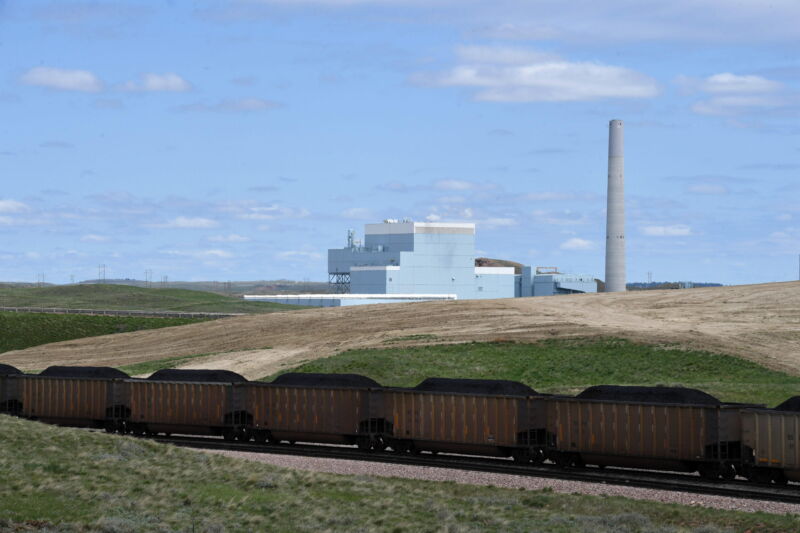New wind, solar are cheaper than costs to operate all but one US coal plant

A coal-fired plant near Gillette, Wyoming, stands alone in the nation on one measure of economic viability—a positive distinction for that plant, but a damning one for coal-fired electricity in general.
Dry Fork Station, with generating capacity of 405 megawatts, is the only coal plant in the country that costs less to operate than it would take to replace the plant’s output by building new wind or solar plants in the same communities or regions, according to a new report issued today by the think tank Energy Innovation.
The report joins prior editions in 2019 and 2021 that, when viewed together, show how the economics of coal power are deteriorating. In 2019, the authors found that more than 70 percent of coal plants were more expensive to operate compared to the alternative of building new wind or solar. That share has now grown to 99 percent, with only the plant in Wyoming stopping it from being 100 percent.
The shift is due in large part to the Inflation Reduction Act, signed in August, which has several incentives that make wind and solar less expensive.
“The trends of coal getting more expensive, and renewables continuing to get cheaper, has definitely continued, but the IRA is, for sure, the big, big shift here,” said Michelle Solomon, a policy analyst at Energy Innovation and co-author of the report.
Even with the recent spike in inflation, which has made just about all electricity sources more expensive, the costs of wind and solar have continued to improve relative to other major sources.
But the report’s estimates do not mean that the owners of the coal plants are losing money by continuing to operate them. Indeed, many of the plants are profitable for a number of reasons, including state regulatory systems that allow the owners to pass all costs on to customers and policies from grid operators that allow the companies to “self schedule,” which means the plants run even when there are less expensive options available on the grid.
The larger point is that consumers could save billions of dollars if power plant owners would replace most of their coal plants with a mix of wind and solar power.
The IRA also includes incentives for carbon capture, which some power plant owners may use to install retrofits. The report’s authors didn’t take into account the possibility of retrofits because no plant has successfully done so other than pilot projects, and it’s not yet clear whether such modifications would work or how much they would cost.
The report doesn’t attempt to quantify the benefits to the climate and health of closing coal plants.
Coal is “struggling to stay around”
At the same time, advocates for fossil fuel industries have argued that coal and natural gas power plants have benefits that can’t completely be explained in terms of costs because the plants are capable of running around the clock, and, in the case of coal plants, they can have weeks or months of fuel stored on site. This is in contrast to wind and solar plants, which depend on wind and sun.
But the report’s authors say the potential for cost savings by closing coal plants is so huge that companies could develop wind, solar, and energy storage in a way that largely mimics the around-the-clock capabilities of coal and natural gas plants and still save money.
The authors illustrate this point by showing that most coal plants are substantially more expensive than wind and solar. About 80 percent of the coal plants in the report have operational costs that are at least one-third more than the costs of getting that electricity from new wind and solar.
https://arstechnica.com/?p=1913612